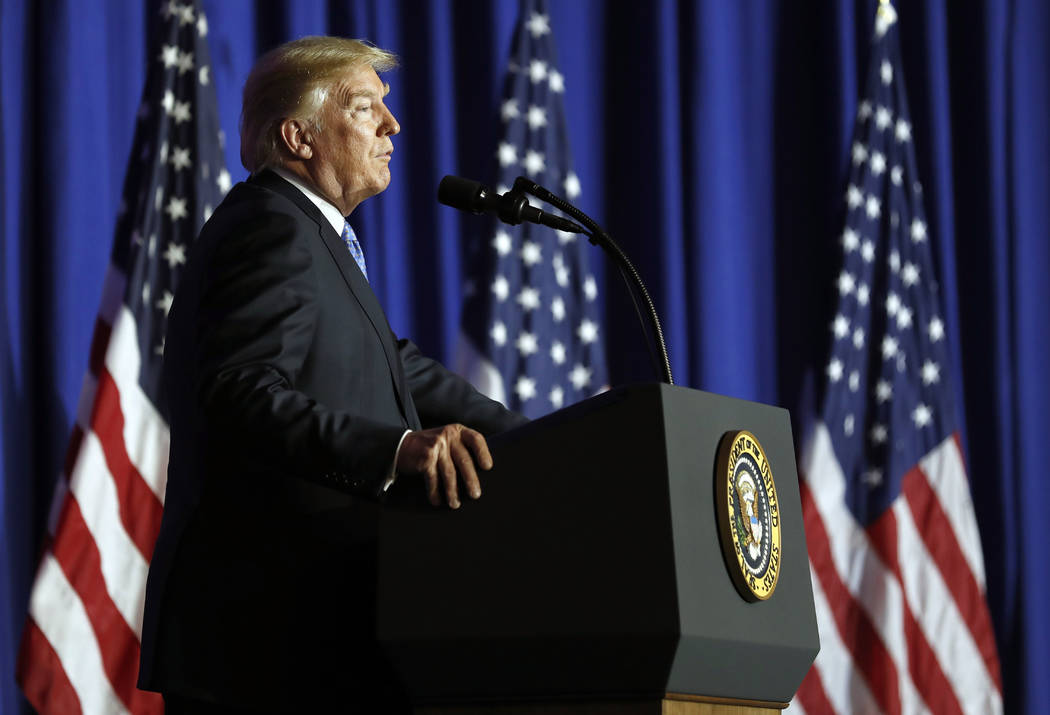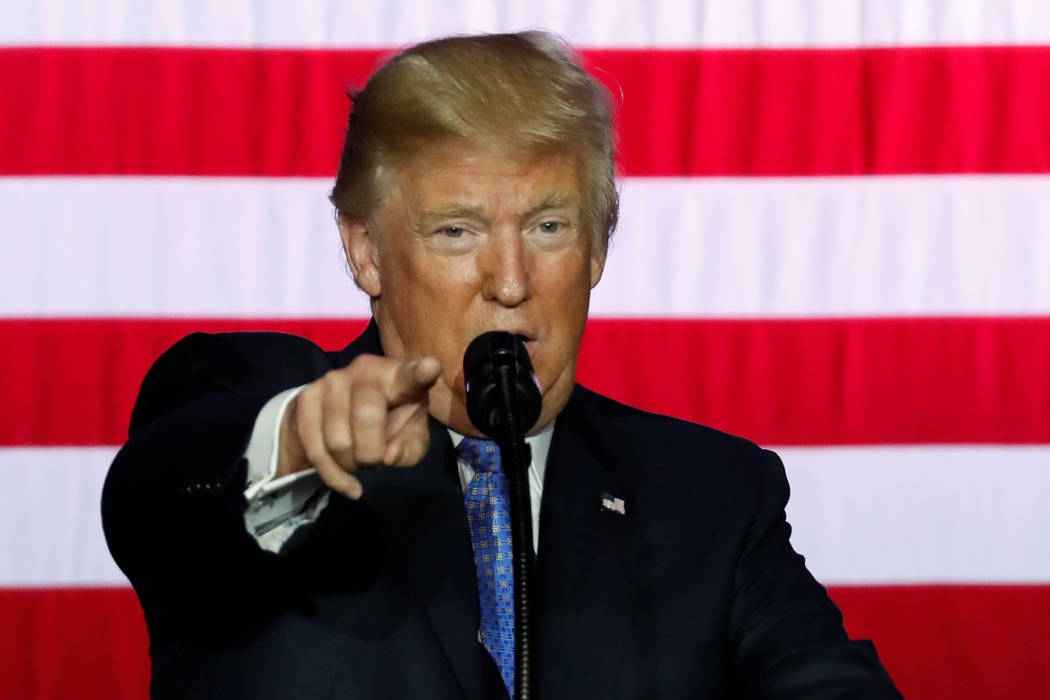Trump, GOP unveil framework of plan to revamp, simplify tax code
WASHINGTON — President Donald Trump and congressional Republicans unveiled the first major revamp of the nation’s tax code in three decades Wednesday — a sweeping tax cut that would reduce levies for corporations, simplify everyone’s brackets and nearly double the standard deduction used by most Americans.
But even before Trump had rolled out the framework for the GOP tax plan in Indiana Wednesday, herds of political organizations from the left and right had issued statements against the package. A handful of groups supported the measure – for example, the right-leaning Heritage Foundation and the Freedom Caucus – but their voices were drowned out under the roar of orchestrated opposition.
On a conference call for the “Not One Penny” campaign organized to fight the GOP plan, Sen. Ron Wyden, D-Ore., denounced the package as “a far-right Republican scheme to endow future generations of the mega-wealthy and leave what amounts to crumbs for the rest of us.”
And in a reference to a possible surcharge that might be levied against top earners, the Drudge Report branded the framework, “More Betrayal, Republican Plan to Raise Taxes!”
Yet it is not clear exactly what any legislation would do. The White House deliberately released a framework with few details to give congressional leaders latitude in drafting legislation.
Fewer tax brackets
The framework, fashioned by the “Big Six” group of GOP leaders, would shave the current seven tax brackets down to three brackets – for which the federal income tax rate would be 12 percent, 25 percent and 35 percent.
However, the GOP outline does not stipulate the income levels for each of the three tax brackets. In other words, it’s not clear at what level of earnings a worker would graduate from 12 percent to 25 percent.
The plan also proposes a surcharge that is supposed to apply to the highest-income taxpayers to ensure that the reformed tax code “is at least as progressive as the existing tax code,” the White House said. However, the framework does not stipulate what the surcharge would be or how much money someone has to earn to be subject to the levy.
Low and middle-income earners should come out ahead. The GOP plan would roughly double the standard personal deduction to $12,000 for single filers and $24,000 for married couples and raise the child tax credit. The framework also proposes eliminating a number of personal deductions, but not those for mortgage interest and charitable contributions.
Still, Ben Harris, chief economist for Results for America and a former adviser to Vice President Joe Biden, maintained “middle-class families get almost nothing” out of the plan. That is partially because many middle class workers pay payroll taxes, but not federal income taxes.
According to the Tax Policy Center, 45 percent of tax filers pay no federal income tax.
It’s not clear if top earners will come out ahead or behind. Harris noted that the framework would reduce the top tax rate from 39.6 percent to 35 percent. If lawmakers add a 2 percent surcharge to the top bracket, “you’re still better off,” he said.
Other tax changes
In addition, the GOP plan would eliminate the estate tax – also known as the “death tax” – and would repeal the individual alternative minimum tax.
Corporations would see their top tax rate cut from 35 percent to 20 percent, part of an effort that Trump said would make U.S. businesses more competitive globally.
Trump had been pushing for a 15 percent corporate tax rate, and had signaled that he would not accept a higher rate. But Wednesday, as he prepared to board Marine 1, the president told reporters, “In fact, I wanted to start at 15 so that we got to 20.”
That tax cut is supposed to be offset in part by the elimination of other corporate deductions.
Trump announced the framework in the Farm Bureau Building at the Indiana State Fairgrounds – a location he chose to highlight the economic benefits reaped from tax cuts enacted when Vice President Mike Pence was the state’s governor.
“This is a once-in-a-generation opportunity and I guess it’s something I could say that I’m very good at, I’ve been waiting for this for a long time,” Trump said.
Democratic reaction
Democrats predictably felt differently.
“Each of these proposals would result in a massive windfall for the wealthiest Americans and provide almost no relief to middle-class taxpayers who need it most,” Senate Minority Leader Chuck Schumer, D-N.Y., said.
Among Trump’s entourage of elected Republicans on Wednesday was Sen. Joe Donnelly, D-Ind. Trump threatened to campaign against Donnelly “like you wouldn’t believe,” if the Hoosier does not vote for the GOP plan.
The Committee for a Responsible Federal Budget, a nonpartisan group that analyzes spending and taxes, released “a very rough and very preliminary estimate” that forecast $2.2 trillion in net tax cuts over a decade.
Harris sees $5 trillion in tax cuts in the package. “You’re not going to find a mainstream economist who will find that more than a quarter of these tax cuts are paid for.” It’s a fantasy, he said, to think that more than $1 trillion would be paid for by “dynamic growth.”
Harris added, Republicans “weren’t able to get a deal done on health care. They’re not going to pass an infrastructure bill. This is their one bite at the apple” of showing the base they can get things done.
Contact Debra J. Saunders at dsaunders@reviewjournal.com or 202-662-7391. Follow @DebraJSaunders on Twitter. The Associated Press contributed to this story.
The Big Six
The six Republican officials who fashioned the tax plan:
—Treasury Secretary Steven Mnuchin
—Chief White House economic adviser Gary Cohn
—Senate Majority Leader Mitch McConnell
—Senate Finance Committee Chairman Orrin Hatch
—House Speaker Paul Ryan
—House Ways and Means Committee Chairman Kevin Brady






















